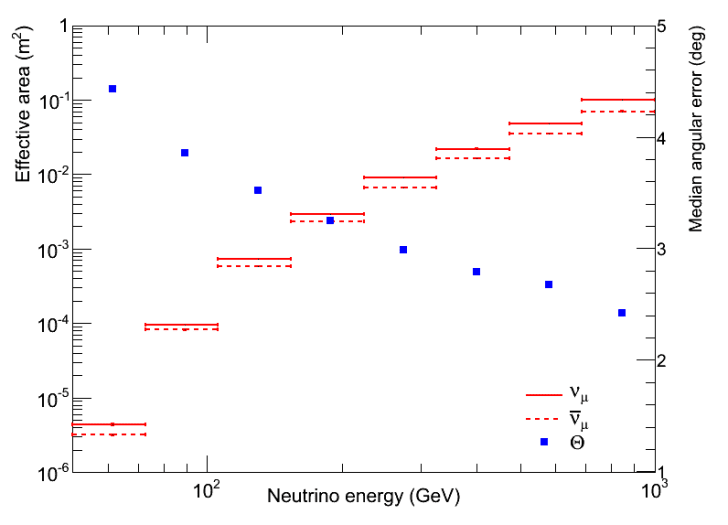Searching for Muon Neutrinos from Dark Matter Annihilations in the Sun
Relic dark matter in the galactic halo may become gravitationally trapped in the Sun and accumulate in its center, where it can annihilate each other, producing standard model particles, which may decay creating neutrinos. Neutrinos can escape the Sun and reach Earth. Icecube indirectly searches for dark matter annihilations in the Sun, by aiming to detect an excess of such high energy neutrinos from the direction of the Sun over the atmospheric background.
A search was performed using data from the IceCube detector in its 22 string configuration. The experimental dataset consists of 104.26 days livetime, corresponding to a set of runs recorded during the period when the Sun was below the horizon at the South Pole, between March 21st and September 23rd.
6,946 candidate muon events from the for the analysis relevant zenith band of 90 to 120 degrees were obtained from this data sample. No excess of muons from the Sun was seen in the experimental dataset. The observed angular distribution is consistent with the expected background. Shown below is the effective area for neutrinos and anti-neutrinos, which indicates the area of an equivalent detector 100 percent sensitive to through-going neutrinos. The effective areas are an average over the Austral winter. The same figure, also shows the median angular error, the median of the angle between the reconstructed muon and the neutrino direction.
The effective area can be convoluted with a theoretical neutrino flux to give a predicted event rate.

The second figure shows the expected distribution of observed Nchan values (number of lit DOMs) for a series of intervals in neutrino energy, which can be used together with a predicted energy spectrum to calculate the predicted distribution of Nchan for that specific signal model.

Data release
The final 6,946 muon candidate events for the IC22 data set are tabulated in an ASCII format:
Click here to download (.zip, 180KB)
IceCube-22 Solar WIMP Data
The data file below contains the histograms of the second figure in an ASCII format:
IceCube-22 Solar Wimp N-Chan Distributions
Included in the data are the zenith, azimuth and the cos(φ) of the events in the IceCube detector, given in radians. φ (phi) is the space angle between the measured event direction and the Sun position at the event time. Also included are the number of optical modules hit (Nchan), an estimate of the uncertainty in the reconstructed arrival directions of incoming neutrinos (at the 1-sigma level for a 2-dimensional Gaussian distribution (39.3%)) and the event times in UTC and MJD.
Please cite this data as R. Abbasi et al. Phys. Rev. Lett. 102, 201302 (2009)
View the article at: http://arxiv.org/abs/0902.2460
For any questions about this data release, please write to data@icecube.wisc.edu.